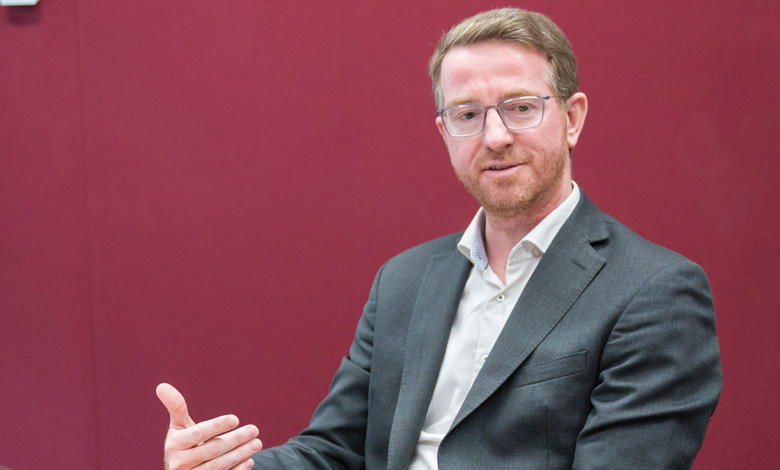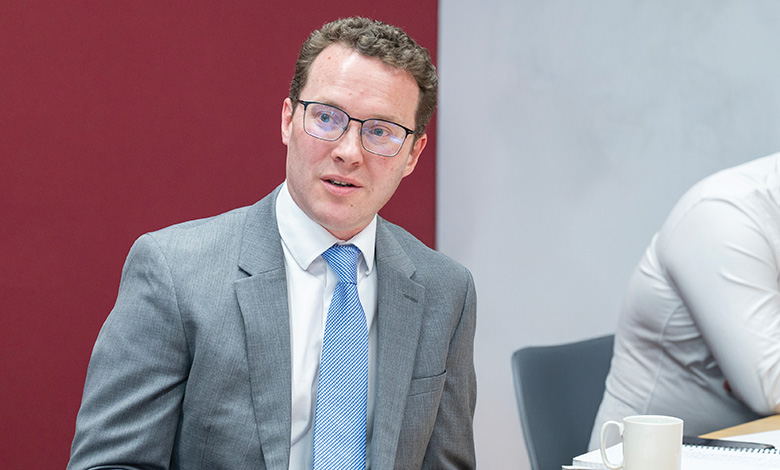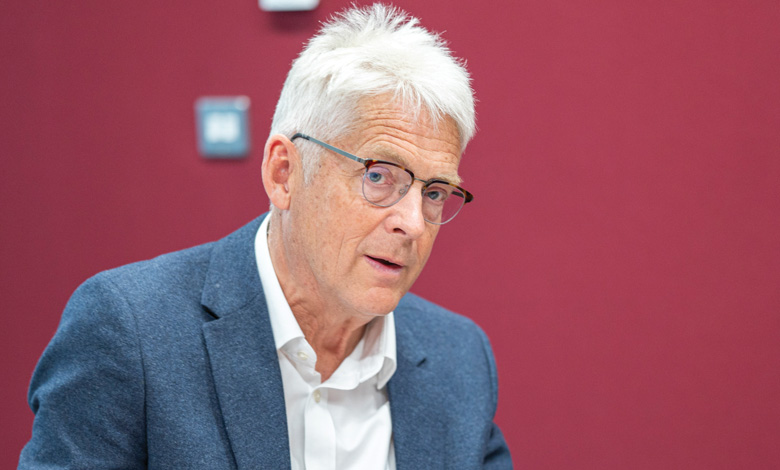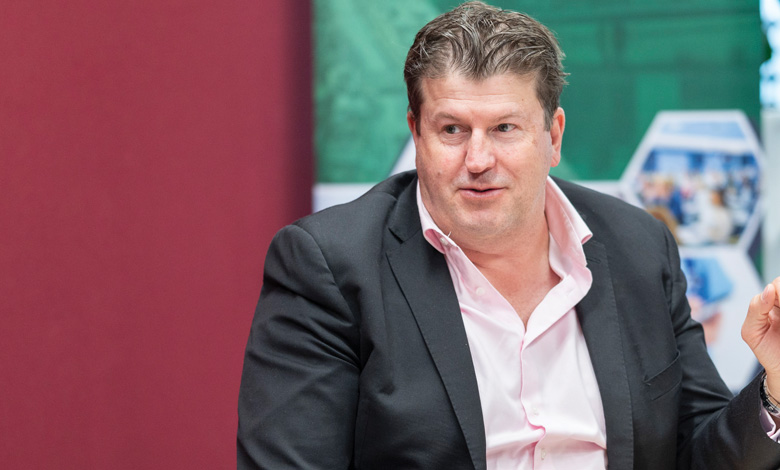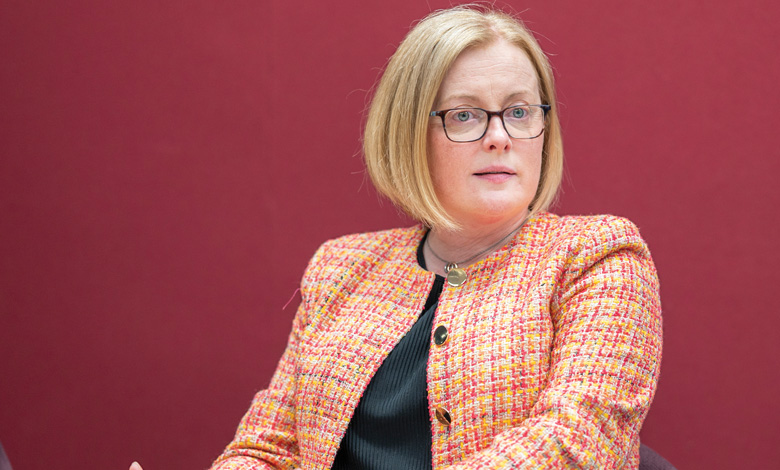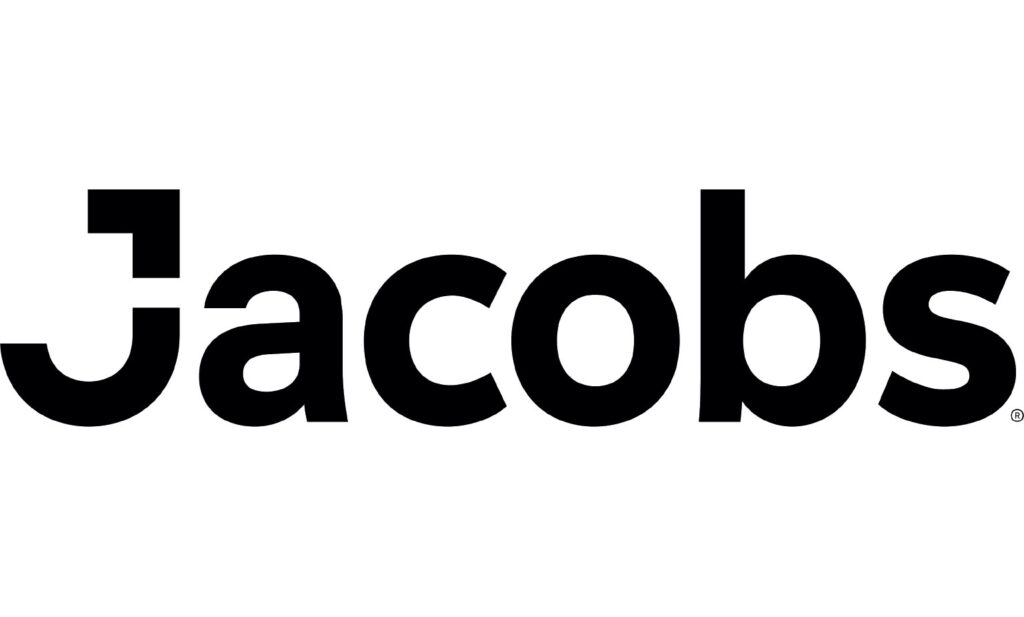Successfully delivering nationally significant infrastructure
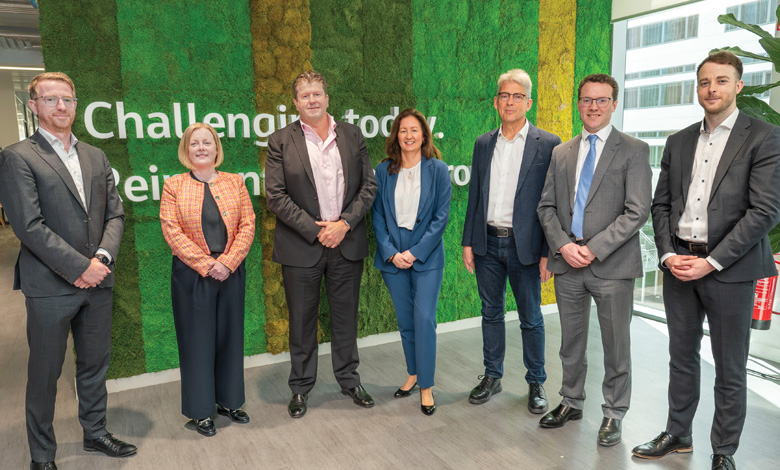
Attended by several key infrastructure delivery stakeholders from across the economy – including the transport, water, and energy sectors – Jacobs hosted a roundtable discussion to explore the challenges and opportunities in delivering nationally significant infrastructure in Ireland.

What is the single greatest obstacle to the delivery of nationally significant infrastructure in Ireland?
Mitch Tunikowski
The main challenge revolves around supply chains. We have a great opportunity to examine how Ireland can increase its purchasing power amid the ongoing challenges such as inflation and planning. Within our supply chains, some stakeholders are more vulnerable than others to escalation. We must ensure that we can forward-buy or that our logistics models are prepared to meet our purchasing power needs over the next decade.
David Bennett
We are facing a significant challenge in trying to coordinate the demand for resources across a compact space. We are in a delivery space where there are different government organisations effectively competing against each other. From my experience in the UK, an act of parliament became the main delivery catalyst because there was a statute pertaining to timescales. There are wider challenges in community engagement but having political leadership from the very top is the key to infrastructure delivery.
Paul Hendrick
The biggest obstacle is still planning; delivery is often delayed due to the nature of the current planning appeals process. There is a significant challenge with the Aarhus Convention which, while well-intentioned, can often be misused in a way that is not in the public interest. It is worth noting that Ireland is the only common law EU member state which is subject to the Aarhus Convention which can present its own legal complications relative to our European counterparts. One potential solution lies in the fact that legislators can pass laws which directly allow for the delivery of a project which can lower the planning appeals risk. The legal entitlement to build the initial Luas light rail system was based on a direct piece of legislation – the Transport (Dublin Light Rail) Act 1996 – passed in the Dáil. This demonstrates that where legislators would like to help support the planning/permitting process for major projects, there is scope for them to help by way of the legislative process available to them.
Maria O’Dwyer
The biggest challenge we face in Uisce Éireann is the significant complex consenting environment in which we must operate. Along with planning, we require a lot of different statutory consents, including licences that are necessary with the new abstraction legislation – Water Environment (Abstractions and Associated Impoundments) Act 2022 – which means that the challenge has somewhat increased. While we want to engage transparently and ensure the public can engage in the process, we need to streamline these processes, particularly for large projects.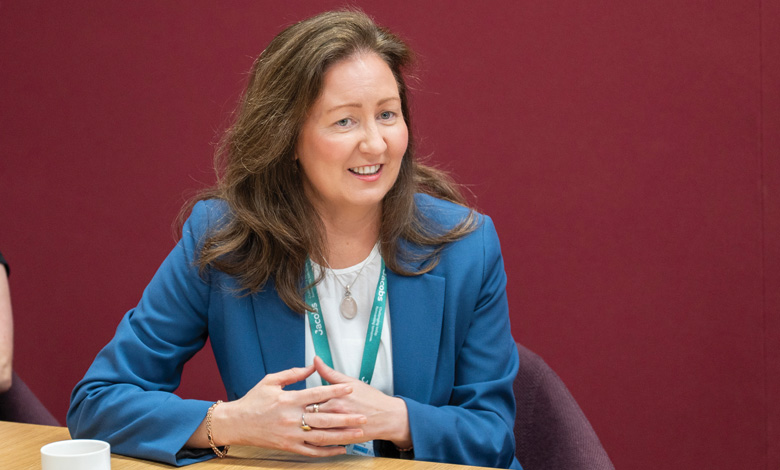
“In government policy, greater emphasis needs to be placed on the ‘interest of the common good’.” Maria O’Dwyer
Robert Desmond
The consenting process, both statutory and non-statutory and the imparted delays are the main challenge. There is also a danger in having a siloed approach where each of the different infrastructure stakeholders are tasked in isolation with delivering on their own mandates. Dependent on the current review of NDP, we are looking to deliver infrastructure at a scale not seen since the mid-2000s. In this context, a single senior decision-maker overseeing infrastructure delivery would be useful. Nationally significant infrastructure needs central government support, and having things like spurious judicial reviews delaying processes will mean that momentum for projects will wane. We need strong leadership on nationally significant projects to garner strong public support and lessen delaying delivery.
Siobhán O’Shea
Our grid infrastructure programme is unprecedented and EirGrid’s challenges are similar to those of other agencies delivering nationally strategic infrastructure at scale and pace. Public acceptance and land access and acquisition are challenges EirGrid recognises and therefore we invest considerable effort in public and stakeholder engagement and collaborate across a wide range of stakeholders. We also welcome the strong leadership from government and their commitment to support strategic infrastructure delivery through the development of a range of cross-agency taskforces to identify and address barriers to delivery.
“Rolling infrastructure delivery programmes are vital for project delivery.” Paul Hendrick
How can infrastructure funding and prioritisation be effectively derisked from changes in government?
Paul Hendrick
There are often years between the initial government approval to support a development project and the construction commencement of a project. One proposal is to ring-fence the project’s capital funds from the initial government approval to the extent that the eventual decision to fund the construction stage of the project is not in any doubt. The final funding investment decision – immediately prior to construction commencement approval – will still be subject to the usual due diligence in terms of assessing the project’s benefits, cost rationale and the outcomes from the tendering process. But there are long-term delivery challenges because prospective funders and project delivery participants are not assured as to whether a project will actually go ahead, even if it has approval from government, because the final decision takes place at the end of a tendering process. A contingency fund or some other form of ring-fencing could be the answer, because the projects we deal with are delivered over several government terms.
Maria O’Dwyer
It goes back to the need to ensure that there is support among stakeholders, government, and in society more broadly. This is a challenge. The solution is to ensure adequate engagement exists and is maintained; we cannot underestimate how important buy-in is for a project if it to be delivered over a long-term period across multiple government terms.
David Bennett
We need the certainty that comes with multiannual funding if we are to continue to attract foreign direct investment at the current scale. Once a project gets to cabinet level for approval, it should mean that there is the certainty of multiannual funding because the prospective investment has already been cleared. If we want to ensure multiannual and consistent funding, we need private sector investment, and the best way to secure that is by giving the investor the certainty that their investment will be returned.
Robert Desmond
The challenge posed by multiple gateways deciding whether a project goes ahead or not can lead to uncertainty which ultimately undermines delivery prospects. Ideally, when we are talking about nationally significant infrastructure delivery agencies would have the benefit of multiannual funding to work within with certainty, but too often projects are signed off in principle yet remain subject to go/no go decisions which can have a destabilising effect on attracting investment.
“There is an opportunity to leverage climate policy and legislation to justify the progression of certain projects.” Robert Desmond
Siobhán O’Shea
The electricity sector has a clear mandate to decarbonise the power system, increase renewables on the system, meet growing electricity demand, and unlock greater energy independence and security. These objectives continue to be supported by the new government through its Programme for Government with an emphasis on prioritising the delivery of essential infrastructure projects and a commitment to investment in the electricity system. We engage regularly with government to inform their policy decisions to support economic growth, decarbonisation and a better society for all.
Mitch Tunikowski
A prospective FDI investor, seeing the certainty and stability provided by multiannual funding in Ireland may be much more inclined to invest. It reduces the risk of their investment and demonstrates stability amid election cycles. We must take a macro view to ensure the State’s interests are protected.
“Projects need to go slow to go quick.” David Bennett
How can Ireland successfully compete with overseas markets to attract the capacity and resources to deliver major projects?
Robert Desmond
Ensuring that we have the right kind of contracting and consenting environment in place is the key to attracting contractors to the Irish market. For most of our recent significant infrastructure contracts, we have been moving into an NEC [new engineering contract] space, especially for significant roads projects, Luas Cross City, and MetroLink. We must ensure that the designated public authority is empowered and resourced to manage the project, especially in a scenario where more contractual risks are being retained. NEC does place a high level of responsibility on the client, which is useful, but we must also ensure that the client has adequate resources available to manage the contracts.
David Bennett
The key is rigorous administration. Often, there is a perception that just because a slightly less adversarial approach has been adopted regarding contracting, it means that the contract does not be administered robustly. However, counterintuitively, there is often tighter contract discipline required to ensure that there is a genuinely collaborative way of working. If we look at the HS2 project in the UK, it was contracted through slimmed down NEC contracts, but there was still a need for robust administration and competence within the contracting authority.
Maria O’Dwyer
The key to attracting these markets is the engagement process. Uisce Éireann held a webinar event to attract interest in the Water Supply Project and the Greater Dublin Drainage Project. Our key focus was to demonstrate to the market an acceptance of the need for these projects with our stakeholders and to ensure confidence in the market that these projects will go ahead. We organised a Europe-wide market engagement in Dublin which was attended by 80 different companies. The fact that the State is funding our big infrastructure projects is – notwithstanding the challenges we face – attracting the investment we need and there is a high level of confidence in our sector. We need to continue this trajectory if we are to meet Ireland’s infrastructure needs.
Mitch Tunikowski
We must strike the right balance between responsibly accounting for public funds and attracting prospective investment. It is essential to convey a clear message that Ireland is a favourable place to do business. Attracting investment is crucial for delivering nationally significant infrastructure projects. Multiannual funding is one way to do this and allowing investors to proceed efficiently once they have secured the contracting rights is also key.
“We need to shift our perspective on delivering these large-scale projects from focusing solely on the business case to emphasising the delivery case.” Mitch Tunikowski
Paul Hendrick
Active market engagement is important. For the Dart+ Programme, we engaged with prospective investors through a series of road shows throughout Europe. There is a need for proactive engagement and having a clear message that Ireland is an attractive place to invest and work in. This also means that we have to consider the terms and conditions for engagement if we want to attract the best organisations with the best resources to support the delivery of Irish public infrastructure, which means we must look at balanced and sustainable contracting models.
Siobhán O’Shea
It is important to acknowledge that we are competing in a tight market, with the volume of major projects to be delivered both within Ireland and on a global scale. Building our indigenous capability and capacity is key to ensuring a long-term pipeline of skills. In parallel, building strong relationships through contracting alliances for delivery has also proven effective and these delivery partners make a significant contribution to the ability to deliver at scale and meet the infrastructure demands and challenges.
What lessons from successful projects elsewhere can be applied to Ireland?
David Bennett
Owners worry about protecting their assets while meeting their project obligations, and this can appear mutually exclusive. We need to find a way to combine these priorities. This was something the London Crossrail did well in its early stages with the utility companies who worked directly with the contractor teams within the project, and it enabled both sets of stakeholders to achieve a mutually beneficial outcome.
Mitch Tunikowski
We are bound by EU procurement guidelines, which often lead to commercial tensions at the tender stage. When you separate these commercial tensions, outcomes tend to be much more successful. In the US, these commercial tensons generally only arise after selecting the project partner. In Europe, they can become a factor too early, but we can change that.
Paul Hendrick
Rolling infrastructure delivery programmes are vital for project delivery. One great exemplar project that I worked on is the Manchester Metrolink Phase 3 tramway extension programme that was delivered on a rolling basis from 2008 to 2017. We signed an initial contract for an initial phase of projects, that included options to incrementally add further phases of work. As the programme progressed, further phases were progressively activated which meant that people could properly invest the time, effort and resources to consistently deliver and become more efficient with the delivery of each phase of the programme – which delivered the projects successfully for all parties with great value for money outcomes for the project funders. Achieving a long-term infrastructure delivery vision hinges on a sustainable rolling series of infrastructure projects over predictable timeframes. Conversely, piecemeal delivery does not generate value for the project funders, the participants or the end users.
David Bennett
Projects need to go slow to go quick. As such, the wider ‘project definition’ is crucial before commencement and the Mass Transit Railway system in Hong Kong several decades ago demonstrated how this can be done well. Although the initial stages of the project took longer, it was amazingly resilient thereafter because the totality of the programmes was established first.
Maria O’Dwyer
We need a culture change with respect to infrastructure and that is going to take a lot of nurturing, but ultimately infrastructure development brings benefits to society. We have taken advice and learned from similar projects across the world and are always seeking to engage and listen. Half of Uisce Éireann’s capital is now delivered through a programmatic approach, providing our delivery partners with predictable pipelines of work is key to our safe and efficient delivery.
Robert Desmond
Having a pipeline of projects with security of funding can be mutually beneficial for both public procuring bodies and private contractors. For example, on the Luas network the ideal is to have one project in each stage of planning, design, and delivery at all times. However, looking after and maintaining existing infrastructure is equally important as delivering shiny new projects and we are seeing this now where some of our existing transport infrastructure will require interventions in coming years. Security of funding is key to this, and we have seen the consequences of failing to maintain existing infrastructure across road networks in Europe and US.
What do we need to do differently as our focus moves from business as usual, to delivering mega projects?
Mitch Tunikowski
Different mega projects will compete for the same resources. To address this challenge, we can leverage AI advancements in engineering across design, consultancy, and delivery spheres. By doing this, we can realistically achieve the successful outcomes we all desire.
“We need a whole of system approach to the delivery of strategic infrastructure with greater alignment between statutory bodies.”
Siobhán O’Shea
Siobhán O’Shea
We need a whole of system approach to the delivery of strategic infrastructure with greater alignment between statutory bodies. Greater support is also required from statutory bodies for major project delivery and from government and politicians, both nationally and locally, by showing their support for major projects across the country and increasing societal understanding of the need for this infrastructure and the benefits it brings to the lives of all people.
Paul Hendrick
In Ireland, there can be a love-hate relationship with major capital investment projects and programmes so managing the narrative is critical. The National Children’s Hospital is a good example. It has been comprehensively critiqued by the media, but the end product is spectacular and when the hospital is completed, the association people will make with it will not be the cost, but of the value of this amazing new hospital facility treating sick children (who are entitled to the best treatment in the best facilities) in this country. We must ensure that people see the long term essential and positive benefits that these infrastructure developments bring to the country and its citizens.
Maria O’Dwyer
In government policy, greater emphasis needs to be placed on the ‘interest of the common good’. Objections ultimately delay benefits being unlocked for the wider community. We are not serving all the people when we are distracted by the way in which policies are written.
Robert Desmond
I think there is an opportunity to leverage climate policy and legislation to justify the progression of certain projects. This can be an effective way to build momentum behind projects as we cannot meet our climate targets by continuing as we are. Planning decisions in recent months suggest this is the direction things are heading.
Mitch Tunikowski
We need to shift our perspective on delivering these large-scale projects from focusing solely on the business case to emphasising the delivery case and the desired outcomes. By highlighting the commercial and community value and looking beyond cost analysis, we can garner wider public support, leading to a more seamless delivery process.
Paul Hendrick
We must focus on real time-bound delivery outcomes above process compliance and be careful not to allow process compliance to become the driver of project delivery timelines which doesn’t deliver value for anybody. This approach reduces the value of projects and slows down their delivery. It is amazing what can be done when process compliance is not the sole focus.
David Bennett
Once a project is defined, we need to orientate the focus on the outcome. We must press ahead with delivery cognisant that it is impossible to please everybody during the delivery stage. People who object during the delivery process tend to be satisfied upon completion of a project, so we must focus on establishing and keeping the delivery momentum and work through the temporary dissatisfaction which often manifests during delivery.
Robert Desmond
In the new strategy published by the Department of Transport, the importance of ambition is highlighted. I think we need to be more ambitious across all sectors. Then, we need to get to work on the ground and adopt a solution focused mentality.

